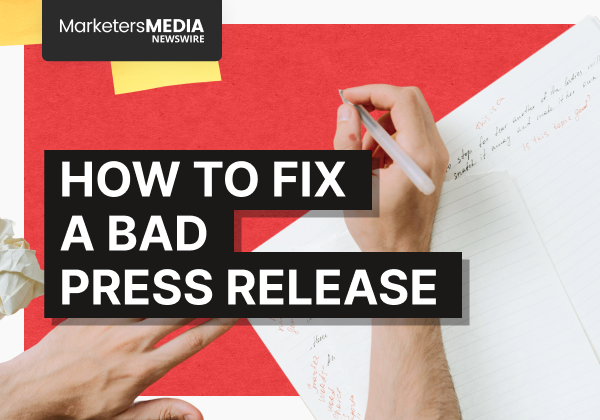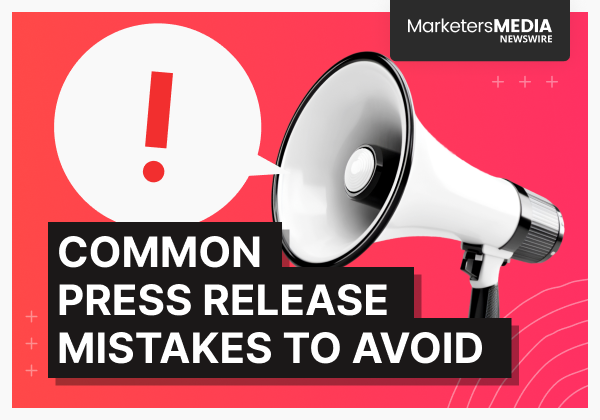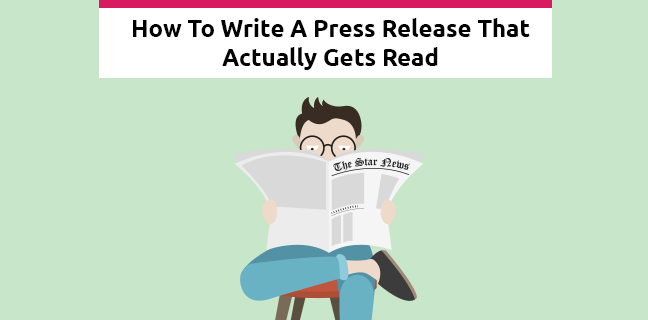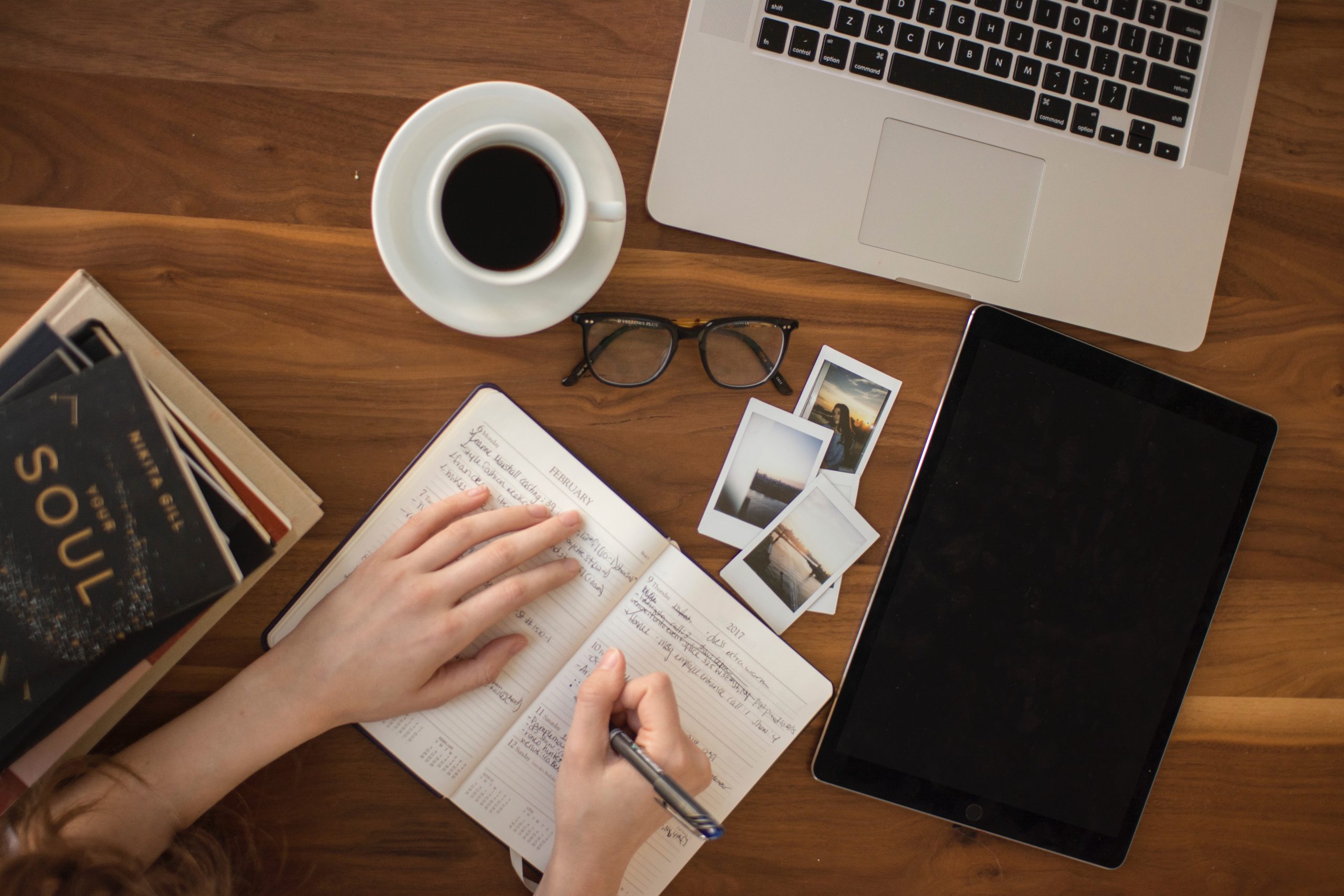Do you regularly send business announcements to media outlets and web portals? Or are you just starting to incorporate press releases into your marketing toolbox?
Before you dive straight into writing a news release, you’ve got to familiarize yourself with the rules and regulations in the PR industry to successfully publish your news release.
Having read more than thousands of news releases, here are some press release guidelines that cover everything you need to know from news angle to structure and formatting.
Press Release Basics
A press release is an official statement from a company designed to share news with the media.
Unlike other company announcements—say, your internal memo on why Steve shouldn’t microwave fish in the break room (seriously, Steve, don’t)—a press release is structured in a way that’s intended for journalists to use directly in their reporting. It serves as a primary source, containing all the facts, quotes, and details they need to write their stories.
Not only that, press releases also come with a specific structure and requirements, which we’ll dive into later in this blog post.
So, when should you use a press release?
You don't need one for every tiny update, but when there’s something genuinely newsworthy, like:
- Product launches
- Partnerships
- Awards or recognitions
- Business changes (new hires, expansions, etc.)
- Events (conferences, seminars, etc.)
- Crisis communication
If you’re curious about specific scenarios when press releases are appropriate or how they’re used, feel free to check out some press release examples to get a clearer picture.
Now that you’ve got the basics down, let’s focus on crafting a press release that is polished, effective, and easy for journalists to work with.
Press Release Writing Guidelines
Though each press release may cover various subjects, all press release submissions must meet the following best practices:
Format
If you're sending an announcement to the media, the most important thing is to write a proper press release.
It may seem obvious, but believe it or not, some businesses still send out blog posts or long-winded ‘About Us’ statements instead. Sure, some press release services might accept that, but local news outlets almost never pick it up. Plus, using the standard press release format also makes it easier for journalists to read.
So, what does the proper press release format look like? Let’s break it down:
#1 Headline
Your headline is your first (and sometimes only) shot at grabbing a journalist’s attention. if it’s too long, too vague, or too boring, your press release will likely end up in the virtual trash bin.
Aim for a short (under 15 words is ideal), punchy, and clear headline. Keep it accurate and avoid trying to be overly clever.
And here's a pro tip: Use active verbs and subjects to make your headline more compelling.
Example:
Oh, and if you’re tempted to throw in an exclamation mark—don’t. This isn’t an ad; it’s a press release. Save the exclamation points for the birthday emails.
Learn more about writing better press release headline here.
#2 Summary
Right below the headline comes the summary. This little teaser elaborates on your announcement, giving readers just enough to keep them hooked.
Keep it under 45 words and make sure it clearly explains what your press release is about.
#3 Dateline
When and where is your news happening? This information lets journalists know if your story is timely and relevant to their audience. Here’s an example of how you might format this:
Example:
San Francisco, CA – January 10, 2024
#4 Body
This is where you dive into the actual news.
Start with the basics (the five W’s: who, what, when, where, why) and write in an inverted pyramid style, meaning the most critical info comes first, followed by supporting details.
Aim for a length of 300 to 500 words, keeping the reader engaged from start to finish. You want to deliver enough information to get your point across without overwhelming them with unnecessary details.
Here are some other technical guidelines to follow:
- Full Name on First Mention: Use the full name of a person on the first mention (e.g., John Doe), then just the surname (Doe) for the rest.
- No Email Addresses: Never include email addresses within the body; save that for the contact section.
- No HTML Tags or Special Formatting: Avoid HTML tags, tables, or any complex formatting. Stick to clean, plain text—fancy formatting can get messed up when picked up by media outlets.
- Active Links Only: ake sure any links you include are active and lead to files with acceptable formats (jpeg, png, gif, tiff, bmp, pdf, doc, xls, ps, rtf, ppt, mpeg, mp3, mov). And don’t overdo it with the links—only add them when they genuinely add value to the release.
#5 Boilerplate
The boilerplate is essentially your company’s bio. It’s where you briefly tell people who you are and what your company does. Think of it as your chance to provide more context beyond the current announcement for those who might not be familiar with your brand.
#6 Contact Information
Finally, don’t forget to include your contact information. If a journalist is interested in your story, they need to know who to reach out to for further details.
Example:
Content
Even with the perfect format, your press release won’t go far without strong content. Journalists are looking for stories that matter, and your press release needs to make that clear.
#1 Have a Clear News Angle
Your press release is up against hundreds, maybe even thousands of others. So, it’s crucial to make sure your news is actually worth reporting.
It could be about something recent, ongoing, or even an event in the near future. But just being new doesn’t automatically make it newsworthy.
Ask yourself: is this a story worth sharing?
It needs to be interesting or important—not just for your business, but for the media and the general audience.
Even with solid topics like charity events or new partnerships, how you write it makes all the difference. A great tip? Always angle your story around how it benefits your audience.
Let’s look at an example:
- “Novelty Concept Adds New Category Feature to Website.” — Sounds dull and not very newsworthy.
- “Novelty Concept Adds Category Feature to Help Users Find the Best Novelty Gifts by Theme.” — This sounds more interesting, because you’ve given people a reason to care. It’s’ all about framing the st ory in ia way that highlights why it matters.
#2 Avoid Jargon and Technical Terms
You might think sounding like an industry expert adds credibility to your press release, but loading it with jargon and technical terms can actually do the opposite.
Not everyone reading is an expert, and if they can’t understand it, your chances of getting published drop. So, stick to plain English that anyone can follow.
Also, write with search engines in mind. Yes, you want your press release to be picked up by journalists, but optimizing it for SEO helps it get found online. Tools like Google Keyword Planner can help identify relevant keywords, but don’t overuse them as Google may flag overly keyword-heavy content as spam.
#3 Get the Facts Right
If you want journalists to take your press release seriously, accuracy is non-negotiable. Imagine a reporter excited to cover your story, only to find out you got the launch date wrong.
Oops. That’s a surefire way to lose credibility fast.
Double-check everything—names, dates, figures, quotes. If you’re including a spokesperson’s quote or info from a partner, make sure they approve it first. It might seem tedious, but getting the details right isn’t just professional, it’s how you build trust with the media.
And speaking of quotes, there’s a big difference between a well-thought-out quote and something that feels like it was pulled from a corporate template...
#4 Don’t Use a Spokesperson or Canned Quote
We’ve all seen them—those lifeless, robotic quotes that seem like they were generated by a committee.
“We are thrilled to announce our new groundbreaking initiative,” said no one, ever.
Journalists can spot a canned quote from a mile away, and they’re not impressed. Instead, make sure any quotes you include sound natural and authentic. If you’re quoting a spokesperson or executive, let their real voice come through.
A well-placed, thoughtful quote can add credibility and personality to your release, but only if it feels genuine.
#5 Use Multimedia (But Be Picky)
A picture may be worth a thousand words, but that doesn’t mean you should dump a thousand pictures into your press release.
When used wisely, images, videos, and infographics can boost engagement and make your release stand out. Whether it’s product shots, event photos, or a helpful infographic, multimedia can enhance your story.
That said, don’t go overboard. Stick to visuals that genuinely add value and help tell your story. If you’re using multimedia, make sure it complements your content rather than overwhelming it.
#6 Include a Call to Action
So, what’s the next step after someone reads your press release? Don’t leave them hanging. Include a clear call to action (CTA).
Whether it’s directing them to your website, asking them to register for an event, or encouraging them to reach out for more details, your CTA should be easy to spot and even easier to follow.
#7 Check for Grammar and Errors
It might seem like a no-brainer, but make sure your press release is free of typos and grammar mistakes. You’d be surprised how often even basic errors slip through!
Remember, journalists and editors are trained to spot these things, and no matter how newsworthy your announcement is, mistakes can ruin it. A typo or misplaced comma can make your business look unprofessional, so take a moment (or two) to proofread before hitting send. Trust me, it’s worth it!
Style
The style of your press release sets the tone and ensures your message is delivered in a clear, professional manner. You want it to look polished and sound engaging, without being overly promotional.
Here are some style tips to help your press release look and feel just right:
#1 Avoid Writing a Blog Post
No, your blog post doesn’t belong on your press release. While both are content, they serve different purposes.
A blog post is informal and targeted at readers seeking how-to’s or guides, whereas a press release is objective and written for the media and a wider audience. Announcements about your company's achievements are better suited for press releases, as they're more newsworthy. Blog posts, on the other hand, aren't typically media-worthy. So, don’t paste a blog post into a press release—focus on writing a newsworthy announcement.
Blog posts are informal and meant for readers who want how-to’s or guides, while press releases are more objective and written for the media and a broader audience.
If you’re announcing a company achievement, it’s better suited for a press release because that’s what the media is looking for. Blog posts? Not so much. They’re great, but they’re usually not newsworthy enough for media outlets.
So, don’t just paste your blog post into a press release, make sure you’re sharing something newsworthy.
#2 Be a Reporter, Not an Advertiser
A mistake that even large companies are making is to have their press releases sound like an advertising copy or sales promotion.
This usually happens when they use "I," "we," or "you" and toss around superlatives like "the best" or "most innovative." Editors tend to avoid this because readers want information, not self-praise. At times, this type of language may even cause journalists to forgo the news entirely as it takes time to revert the advertising language from the copy to an objective piece.
To avoid your news release from sounding like a sales letter, adopt journalistic writing and write a no-nonsense copy that gets straight to the important information.
Use third-person language instead of first-person or second-person pronouns. For example, write “The company announced” instead of “We are excited to announce.”
And if you use superlatives, back them up with facts. For example, saying "P&G serves consumers in 70 countries" adds credibility to their claim of being a global leader. The easier you make it for journalists to use your release, the more likely it’ll get published.
So remember, the better your press release fits into their editorial approach, the more likely it will be published.
Press Release Topic Guidelines
Now that we’ve gone over how to write and style your press release, it’s time to ask: does your topic fit?
Here’s the thing: not every press release is a match for every newswire. MarketersMEDIA Newswire—and most newswires, for that matter—have specific guidelines on what they’ll accept.
It’s always smart to check those guidelines first to make sure your news fit their criteria. After all, each newswire plays by its own rules. Now, let’s go over some common press release topics that might not be accepted.
- Political and civil elements
- Radical religious views and elements
- Opinionated or hateful views and elements
- Legal cases or lawsuits
- Illegal or controversial/debated topics
- Psychoactive drugs, cannabis, or marijuana
- Making money online, loans, and trading products/services
- Stock market, market rumors, or stock commentary
- Betting or gambling
- Excessive promotion or non-news content
- Health products, treatments, and body modifications
- Mystical or pseudoscience elements
- Sexual and love life
- Blockchain-related content
- Publicly listed company
- Press releases requiring clearance
- Press releases requiring further proof
- Content with malicious or inauthentic piggybacking intent
- Non-English press releases
For more details on specific topics and guidelines, you can check out MarketersMEDIA's Press Release Guidelines to ensure your topic is good to go.
Wrapping Things Up
That’s it—these are the press release guideline tips you should always keep in mind to make sure your news story gets published.
One last piece of advice is—when in doubt, ask! If you’re unsure whether your press release meets the guidelines or just need a little advice, don’t hesitate to reach out to our customer support team. They’re happy to help with any questions and make sure your press release is ready to shine.
Free Press Release Template
Tell us where to send your PDF:








